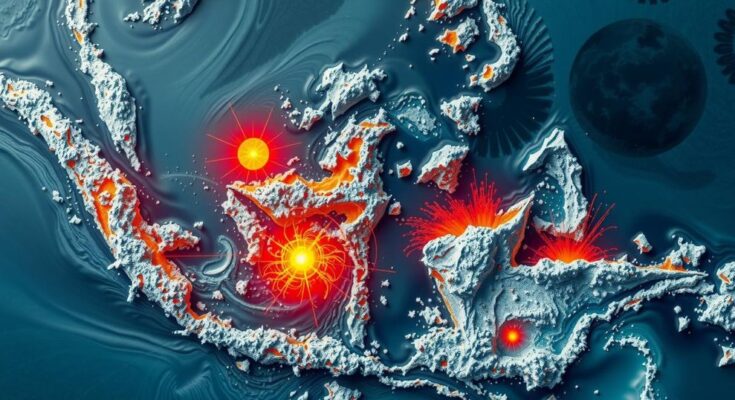This article reviews major earthquakes and tsunamis, focusing on the tragic events of 1908 in Italy and 2004 in Indonesia. It emphasizes the human toll and the worldwide response to such disasters, showcasing the lessons learned and the ongoing need for improved preparedness in coastal communities.
On December 28, 1908, a catastrophic earthquake struck the region of Messina and Reggio Calabria in Italy, resulting in an estimated 70,000 fatalities. The earthquake, which measured 7.1 on the Richter scale, remains the most lethal tectonic event in European history. This disaster sent shockwaves globally, compelling various news outlets, including the Deseret News, to cover the tragedy extensively.
In close historical context, a devastating 9.1-magnitude earthquake occurred on December 26, 2004, beneath the Indian Ocean. This seismic event initiated a tsunami with waves reaching heights of up to 100 feet, resulting in approximately 230,000 deaths. Furthermore, on March 11, 2011, Japan experienced a similar fate when a tsunami, traveling at speeds nearing 500 miles per hour and towering up to ten meters high, overwhelmed its eastern coastline, claiming over 18,000 lives.
The records stored within the Deseret News archives provide reflections on these monumental tragedies and the resultant global responses. Significant stories include analyses on how communities unite for disaster relief, the fragility of tsunami warning systems, and local accounts of resilience amid devastation.
Such historical events demonstrate enduring vulnerabilities faced by coastal regions and underline the necessity for improved disaster preparedness and response protocols. The interplay between natural disasters and human resilience continues to deliver poignant lessons regarding the need for awareness and response strategies in similar future occurrences.
Throughout history, earthquakes and the tsunamis that often follow represent significant threats to coastal populations. The disaster in Messina in 1908 represents one of the deadliest examples in Europe, a grotesque reminder of nature’s power. Following that, the Indian Ocean earthquake and tsunami of 2004 ranks as one of the most tragic events in the modern era, prompting global humanitarian efforts. These instances highlight not only the urgency of an effective response to such natural disasters but also the continuing challenges of tsunami preparedness and victim assistance.
In conclusion, the significant earthquakes and subsequent tsunamis that have struck Italy in 1908 and Indonesia in 2004 serve as stark reminders of the potential for tragic loss of life when communities are ill-prepared for such natural disasters. These events emphasize the critical importance of effective warning systems, community awareness, and the coordination of international relief efforts. Lessons learned from these disasters continue to inform and improve future responses in vulnerable regions.
Original Source: www.deseret.com




